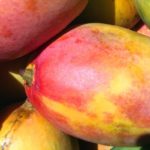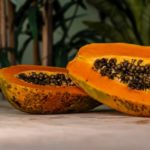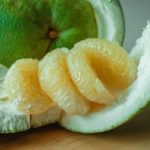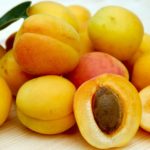Orange Fruit Nutrition Facts and Health Benefits
The orange is a delicious citrus fruit from the Rutaceae family with a rich and glorious history believed to date back to China around 2500 BC. Renowned for its sweet taste and health-giving properties it has become an internationally recognized symbol of great taste and good health, with the orange’s versatility seeing it used in food and drink on an enormous scale. And its popularity is undiminished; in 2010 some 68.3 million tonnes of oranges were grown worldwide, with Brazil leading the way in production rates. Oranges are now so widely available it is easy to forget their complex past in the developing, and tumultuous, human world.

Although originating in Asia, it is believed to have been during the Age of Discovery (circa the 15th Century) when explorers and merchants began to bring oranges back across the continent for the first time. Christopher Columbus was one of the first to take seeds from oranges and lemons with him on his travels, introducing them to the New World around 1493. A few hundred years later Spanish missionaries brought orange trees to America circa 1710; this global travel brought orange trees to every corner of the world, but this was all accomplished by the arduous, often life-threatening trials of life at sea. With crushing irony, despite oranges being such an abundant source of vitamin C, many sailors were left to suffer the horrors of scurvy during this era, completely unaware of the oranges’ life-giving powers. Others were aware of their potential, although unaware of the science, with sailors stricken with scurvy often offered oranges at ports in the Middle East. Suitably cured of their ailments, they would head out to sea unawares and were struck down with the disease once again. Perhaps due to the highly superstitious, ignorant nature of the times no link was made between oranges alleviating scurvy; it wasn’t until the 20th century that a professional study discovered the link between vitamin C and scurvy.
In modern times the orange is a regular staple of billions of people’s daily diets. Its great taste and versatility make it a favorite for drinks (such as cocktails), desserts, and as a spice. Here’s a look at what the mighty orange has to offer us all.
Types
The citrus family is a complex and varied one, and there is a myriad of different forms of oranges available. The most common make up two-thirds of the global orange production and are mainly used to produce the fabled Orange Juice we all enjoy so much. There are, however, differing varieties, for instance, the Fukuhara oranges of Japan, and Belladonna form in Italy, whilst the most popular orange in China is the Jincheng. Parson Brown oranges of Florida, Mexico, and Turkey have remained a persistently popular orange over hundreds of years. As it is the earliest maturing fruit in the USA it is often used to start the orange season off. Meantime, in Brazil, the hugely popular Pera variety yields up to 8 million tonnes for the orange industry each year.
Health Benefits
Despite being naturally high in sugar, and possessing an average acidity of around pH 3.0, oranges have a wide range of health benefits which make the fruit an excellent addition to any diet. A natural source of vitamin C (they provide 53.2 mg per 100 g about 90% of your recommended daily intake), an orange helps boost the immune system and offers antioxidant protection. Eating one orange can provide your daily need of vitamin C in one sitting, the vitamin helps remove free radicals from your body, in turn assisting the warding off of DNA mutations in your body. Notably, this happens mostly in the colon, thus decreasing your risk of colon cancer.
The fruit contains a myriad of phytochemicals such as hesperetin, naringin, and naringenin. These are flavonoids found in citrus fruits. Naringenin is believed to possess a bio-active effect on human health as an antioxidant, free radical scavenger, anti-inflammatory, and immune system modulator. Scientific studies have shown this reduces oxidant injury to DNA, with total antioxidant strength (ORAC) of oranges at 1819 µmol TE/100 g. This is very good, for those of us not scientifically inclined.
Oranges offer fiber and pectin (which helps break down fat), the latter has been shown to reduce blood pressure by binding stomach acids in the colon. As they are rich in potassium this will also aid your heart rate as it counters sodium in your bloodstream.
You’ll also find vitamin A to be prevalent in oranges, and other flavonoid antioxidants like alpha and beta carotenes, beta-cryptoxanthin, zeaxanthin and lutein. Vitamin A helps keep your skin and eyes in good working order, whilst the flavonoids fight off lung and oral cavity cancers. Even better is the news oranges are a very good source of B-complex vitamins such as thiamin, pyridoxine, and folates. These can help keep you alert and boost your nervous system.
Due to all this, a glass of orange juice would actually make an excellent boost for anyone sporting a hangover; the energy, nutrients, and vitamins provided by an orange would help steer you back towards feeling normal! The alternative, of course, is not to drink, but orange juice is there as a natural booster to your system all year round.
Food
The orange is a versatile fruit and can be used in a wide variety of foods. Obviously a favourite with fruit salads, it is also a popular flavour for ice cream, lollies, sweets, and other confectionaries such as cakes and biscuits. The outer layer of the orange rind is a popular ingredient; grating the skin leads to orange zest which adds a flavoursome punch to many foodstuffs. The orange’s skin, although not overly tasty, is actually higher in vitamin C than the flesh – it also contains more fibre. However, before taking up this additional orange consumption bear in mind many commercial oranges are sprayed with pesticides to aid growth. If you wish to eat the rind then stick to organic oranges.
Seville oranges are usually used to make marmalade; here the orange is separated and placed in a muslin bag before being boiled with juice, sugar, and water to extract the pectin. The resulting mix is then left to set as the popular preserve.
Drinks
Whilst orange juice is available in wild abundance these days, it should be remembered what a luxury it actually is. The juice is a popular drink (with or without the pulpy orange bits), and it has a regular place in bars around the world as a popular mixer for alcoholic beverages, such as vodka. It is also a popular addition to many fruit smoothies.
There are other uses, too, such as herbal teas. Famously there is an added twist of bergamot orange to a particular tea which forms the popular Earl Grey brand.
Orange Fruit Nutrition Facts
- The word “orange” derives from the Arabic “naranj” which, during the 14th century, arrived in the English language as “narange”. In time the word morphed further still, and records show that “orange” was first used as a description for colour in 1542.
- Depending on the humidity and environment oranges can be a number of colours. Vietnamese and Thai oranges have bright green skin due to the temperature (they are still orange inside). As they’re subtropical the location determines the colour; in mild areas the green skin becomes orange, but in hot nations, the chlorophyll in the skin is preserved and keeps the orange green.
- Brazil grows a third of all the oranges in the world! 85% of these are used for orange juice.
- In Chinese disciplines, such as feng shui, orange is the colour of purpose and organisation, apparently being linked to concentration. Some international brands have picked up on these and use colour in their advertising campaigns.
- No matter how hard you try you won’t be able to find a word that rhymes with “orange”.





























